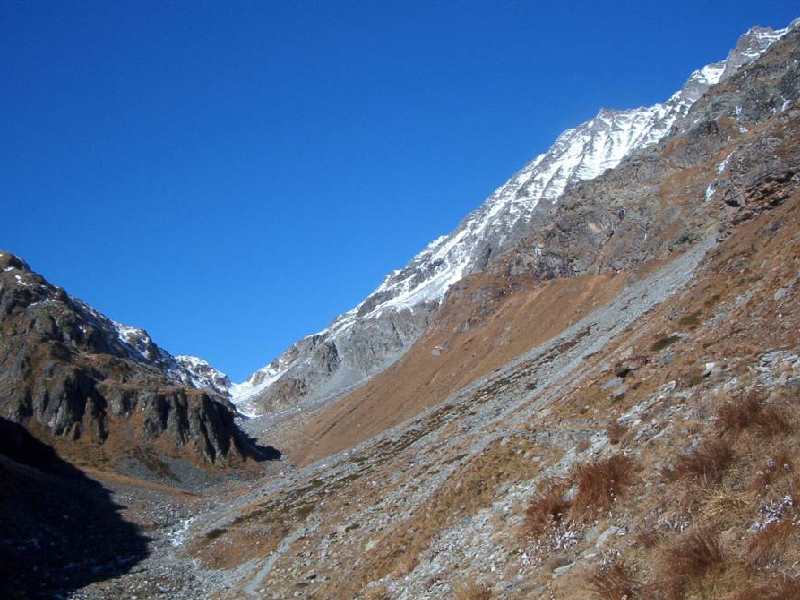by Saveria Masa
 The final stretch of the Cavallera road to the Muretto pass.
The final stretch of the Cavallera road to the Muretto pass.
As a border territory, the Valtellina, like the Valchiavenna, with its thousand-year old tracks, has always attracted the attention of historians: an interest which, for a long time, was mainly concentrated on the most well-known roads.
The most recent historiographic views have revealed the presence of an intense network of so-called secondary roads, which nevertheless proved useful for the communities which developed along these roads.
One of those communities was the Valmalenco with the road to the Muretto pass which passes along its length.
The ancient road of the Muretto pass began in Sondrio and wound its way up along the entire Valmalenco with a gradient of approximately 2,200 m.
It reached the pass of the same name at a height of 2,562 m, and then descended once more across the Swiss valley of the Muretto to the Maloja pass.
The local name, Muretto, is not thought to be very old and probably originated after the 16th century.
The most commonly used name for the Muretto Pass throughout the 16th century was 'Monte dell'Oro' [the Mountain of Gold] or, often quite simply 'l'Oro' [the Gold].
The word 'Monte' used to indicate a mountain to be crossed (e.g. names such as Montespluga, Moncenisio, Monginevro, etc).
The toponym 'Oro' is also found on the Swiss side of the valley of the Muretto Pass, which is also named the valley of the Ordlegna or 'or d'legna' which, in the Engadine dialect, means the gold of Egna, of Engadine.
The word ‘Oro’ probably comes from an ancient belief that there were seams of gold near the pass.
This belief was disproved by scientific studies, which proved gold did not exist, although there may be some aquiferous pyrite in the abundant quartz minerals in that area (which was also believed to be one of the compounds of gold), which deceived the ancient populations.
As regards the etymology of the toponym 'Muretto', the most credible hypothesis is certainly the one expressed by Enrico Besta, who believed the word 'Muretto' came from 'Murum' of the Val Bregaglia, that is to say a natural "wall", which divides Valley into Sopra and Sottoporta.
There is, in fact a natural wall of rock at the Muretto Pass, dividing the two Italian and Swiss valleys below.